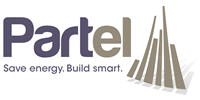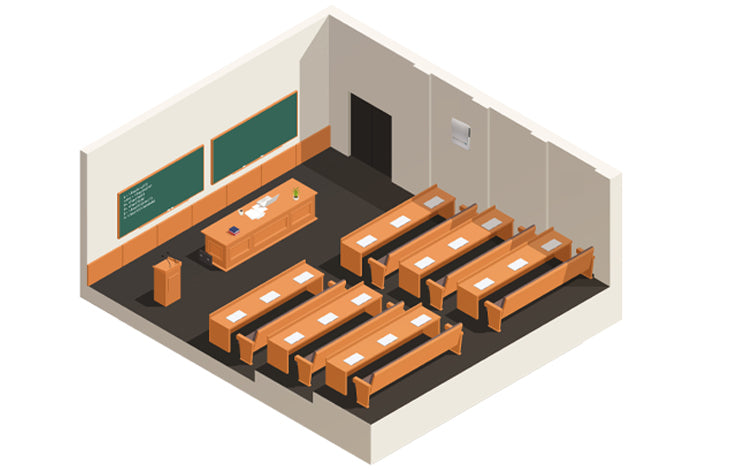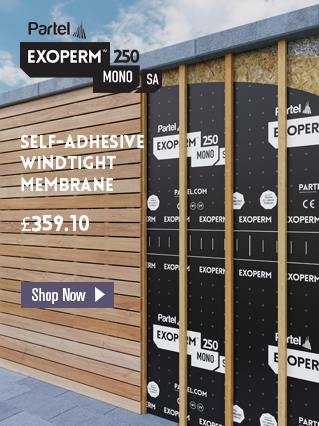How can ventilation help improve life at school?
With schools in Ireland and across the world returning to in-class learning recently there has been much conversation around how the risk of contracting Covid-19 in such settings can be minimised. While face coverings, social distancing, and good handwashing etiquette have been the center of the government’s public health campaign, ventilation has also come into focus.
In this article, I will outline the key guiding principles outlined in the ‘Practical Steps for the Development of Good Ventilation Practices in Schools V3’ published by the Irish Department of Education in May 2021 and suggest what I believe to be more appropriate ventilation measures for school settings.
The Department of Education’s Recommendations:
In short, the Department has recommended increasing ventilation in classrooms as much as possible. They suggest keeping windows and doors partially open during class, and fully open when the classroom is not in use to encourage natural ventilation. This type of ventilation is known as ‘purge’ ventilation, which allows the movement of a substantial volume of air in a short time. In my opinion, this approach to ventilation is not an appropriate long-term solution for two main reasons: i) it is too crude to provide adequate ventilation for indoor air quality while minimising energy demand, ii) it will cause discomfort for students.
i) As you sit reading this article, how is the air quality in the room? Unless it is extremely poor it can be very difficult to tell, and hence, know when additional ventilation is required. To make their recommendations as universally applicable as possible, the Department has prioritised maximising air change rates in the classroom over air quality monitoring. In some cases, the practical steps outlined may not be enough, while in others they may result in overventilation.
I was delighted to see that in the Departments' latest revision of the Practical Steps for the Development of Good Ventilation Practices in Schools document they have encouraged the use of carbon dioxide monitors to enhance the measures outlined in their guidelines. The use of CO2 sensors is also recommended by The Lancet Covid-19 Commission, who published the ‘Designing Infectious Disease Resilience into School Buildings Through Improvements to Ventilation and Air Cleaning’ in April 2021. While CO2 levels are not directly correlated with the risk of Covid-19 contraction, they are an accurate and affordable way of judging air quality. This provides teachers with feedback on the effectiveness of their purge ventilation strategy and can help them strike a balance between good indoor air quality and the energy demand of the building.
The Department has referenced the Chartered Institute of Building Services Engineers (CIBSE) and the Air Infiltration and Ventilation Centre (AIVC) who have identified 1400-1500 ppm of CO2 as an indicator of poor indoor air quality. Using CO2 sensors is a far more reliable method of monitoring indoor air quality than blindly following the practical steps outlined by the Department, and therefore, should be utilised in schools across the country. The Department of Education has committed to providing CO2 sensors to schools to help monitor air quality. If you work in a school and want to learn more about this, you should visit the Department’s ‘Guidance on Ventilation in Schools’ page here.
ii) The discomfort associated with permanently open windows is something the Department of Education is aware of. They have suggested increasing ventilation when the weather permits and “without causing discomfort”. While the use of CO2 sensors will inform teachers when indoor air quality is good enough for them to safely close windows, CO2 levels will quickly climb above 1400 ppm in a busy classroom setting. Unfortunately, using purge ventilation to deal with high occupancy settings in the Irish climate is not possible without sacrificing comfort, and therefore I believe other options should be considered. As a former secondary school teacher, I know that student comfort has a major impact on productivity and so, strategies that ensure a balance between indoor air quality and comfort, such as mechanical ventilation with heat recovery or demand control ventilation, should be considered.
Getting the Balance Between Indoor Air Quality and Comfort:
Striking a balance between indoor air quality and comfort is almost impossible in Ireland, especially during the winter months. Mechanical ventilation with heat recovery (MVHR) is a much more effective way of providing excellent IAQ while maintaining occupant comfort. Put simply, MVHR is a form of continuous ventilation which supplies fresh outdoor air into a building while extracting stale air from the building, recovering heat from the outgoing air in the process. Typically, these systems fall under two subcategories: Centralised MVHR and Decentralised MVHR.
Decentralised MVHR is one of the most common ventilation strategies in central Europe and is what makes Lunos somewhat unique in the Irish market. Decentralised ventilation negates the need for a large central ventilation unit, instead of using smaller individual units which are installed in the wall of each room (see image 1).
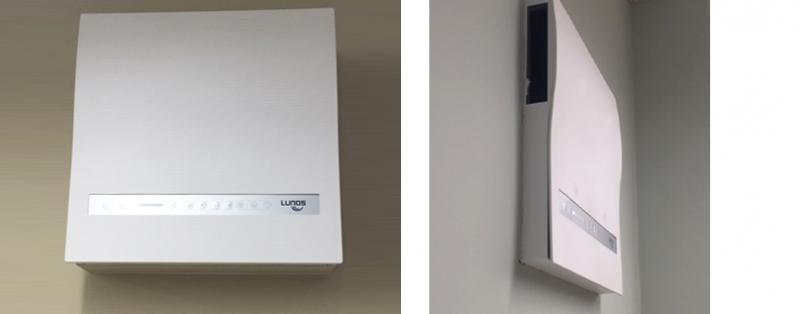
Lunos Nexxt units are constantly supplying fresh air and extracting stale air, increasing the air change rate in the room. These units have been specifically designed for large spaces, such as classrooms, and are capable of up to 30 l/s, meaning three units would provide enough fresh air for approximately 30 students (according to CIBSE recommendations – 3l/s in general mode, 8l/s in boost mode). The volume is different?
Unlike the purge ventilation techniques being utilized by schools across Ireland currently, the Lunos system can maintain a comfortable temperature in classrooms. The heat exchanger within each Lunos Nexxt unit (as seen in Image 2) can recover approximately 83% of the heat from the extract air before it is dumped outside, without the need to recirculate air. This means that the fresh air being supplied into each classroom is tempered to around 17°C (depending on classroom temperatures), improving comfort and significantly reducing heating bills. Lunos have worked hard to ensure their units are amongst the quietest on the market, another comfort criterion that must be considered in a classroom setting.
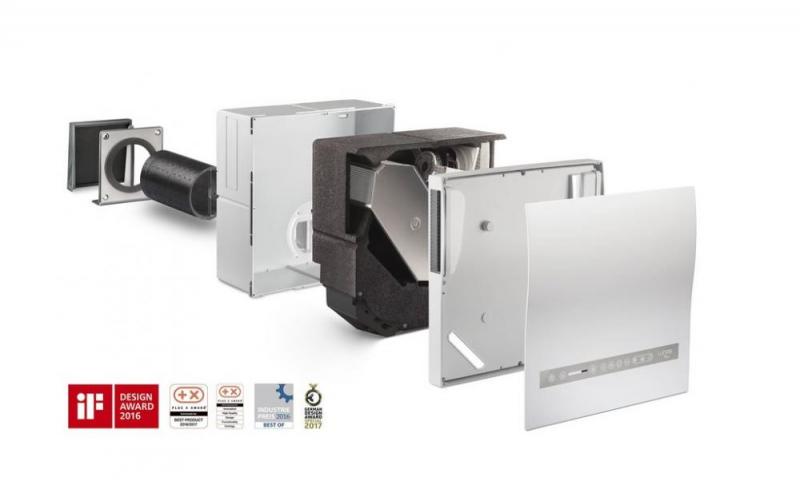
Each Lunos Nexxt unit comes with a humidity and temperature sensor as standard but can also integrate a CO2 sensor. The ventilation rate being delivered by the Lunos system can vary depending on the classroom conditions, without any intervention from teachers. This allows the teachers to focus on their job, while the air quality looks after itself.
Centralised vs Decentralised MVHR in a School Setting:
If designed, installed and commissioned to a high standard both centralised and decentralized MVHR can be an excellent solution to ventilating a school. However, because of the scale and complexity of ventilating a school with a centralised system, decentralised MVHR can often be the simplest solution. The only ductwork in the Lunos system is the duct passing through the external walls. This negates the need for a complex ductwork system which would require a dropped ceiling, and fire stopping in accordance with Part B (fire safety regulations). This also simplifies the cleaning process, meaning the school caretaker does not need any specialist equipment to carry out annual maintenance.
The Lunos decentralised system allows for a great degree of flexibility. Hybrid systems use a combination of MVHR in rooms where comfort is important (classrooms) and extract ventilation without heat recovery in rooms where people spend less time (toilets, canteen, etc). With a hybrid system, a school can upgrade its ventilation system at a very reasonable cost, while still enjoying most of the benefits associated with a full MVHR system.
Perhaps the biggest differentiating factor between centralised and decentralized MVHR in a school setting is the simplicity of retrofitting decentralized ventilation. Retrofitting a centralised system is a major undertaking with numerous complexities. In contrast, the Lunos system can be retrofit with relative ease. The installer simply cores a 162mm hole through the external wall in each room and fits the Nexxt unit. Each unit is then wired back to a central control panel, which ensures the units are synchronized. This installation takes a matter of days can be carried out with minimal disruption. Click here to read a case study of an Irish retrofit project which utilized Lunos Nexxt ventilation units.
Conclusion:
The Lancet Covid-19 Commission views the return to school as a “once-in-a-generation opportunity for health-based improvements to school buildings, such as improving indoor air quality (IAQ), which can reduce the risk of airborne infectious disease transmission as well as benefit health and academic performance”.
While the Department of Education has outlined practical steps to purge ventilate classrooms in an attempt to keep our students and teachers safe from Covid-19, we must not forget the importance of a comfortable learning environment. There are several ventilation strategies that can deliver as much fresh air (if not more) than opening windows while still maintaining comfort, and as elaborated on above, can be retrofit with relative ease. Upgrading your school’s ventilation system will provide benefits long after we emerge from this pandemic with academic improvements, reduction in absenteeism, and lower respiratory symptoms all associated with IAQ improvements.
Here in Partel, we offer a free ventilation design and consultancy service. If you would like us to design a ventilation strategy for your school, visit your school to assess your ventilation needs, or just want to learn more about how you can improve your school’s ventilation call us on 0818 333 355, or email sales@partel.ie


